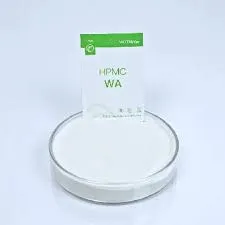
সেপ্টে. . 15, 2024 01:41 Back to list
use of hydroxypropyl methylcellulose
The Use of Hydroxypropyl Methylcellulose
Hydroxypropyl methylcellulose (HPMC) is a versatile cellulose derivative widely utilized in various industries due to its unique properties. As a non-ionic, water-soluble polymer, HPMC serves multiple functions, ranging from a thickening agent to a film-forming agent, making it an indispensable component in products across pharmaceuticals, food, construction, and cosmetics.
The Use of Hydroxypropyl Methylcellulose
In the food sector, HPMC is employed as a food additive, serving a variety of functions including as a thickener, emulsifier, and stabilizer. It enhances the texture and consistency of food products, ensuring a smooth and palatable mouthfeel. In low-fat and gluten-free formulations, HPMC can mimic the functional properties of fats and gluten, providing structure and moisture retention. Furthermore, it plays a role in extending the shelf life of food products by preventing moisture loss and maintaining freshness.
use of hydroxypropyl methylcellulose

The construction industry has also benefitted from the use of HPMC. In cement-based materials, HPMC acts as a thickening agent that improves workability and reduces sagging. When added to tile adhesives and plaster formulations, it enhances adhesion and provides better water retention, which is critical for the curing process. The inclusion of HPMC in construction materials leads to improved performance and durability, making it a popular choice among builders and contractors.
In the cosmetics and personal care industry, HPMC is valued for its ability to function as a thickener and stabilizer in lotions, creams, and other formulations. It helps in achieving the desired consistency and enhances the sensory attributes of cosmetic products. Additionally, HPMC can form a protective film on the skin, contributing to moisturizing effects and improving the overall user experience. Its non-toxic nature and compatibility with various ingredients make it an ideal additive for skin care products.
The environmental aspect of HPMC is also noteworthy. As a biodegradable polymer derived from natural cellulose, HPMC is more environmentally friendly compared to synthetic polymers. This aligns with the growing consumer preference for eco-friendly products in all sectors.
In conclusion, hydroxypropyl methylcellulose is a multifunctional polymer that has found extensive applications across various industries. Its versatility, safety, and effectiveness as an excipient, thickener, and stabilizer make it an invaluable ingredient in pharmaceuticals, food, construction, and cosmetics. With ongoing research and innovation, the potential applications of HPMC continue to grow, ensuring its place as a key component in the formulation and manufacturing of a wide range of products.
-
Versatile Hpmc Uses in Different Industries
NewsJun.19,2025
-
Redispersible Powder's Role in Enhancing Durability of Construction Products
NewsJun.19,2025
-
Hydroxyethyl Cellulose Applications Driving Green Industrial Processes
NewsJun.19,2025
-
Exploring Different Redispersible Polymer Powder
NewsJun.19,2025
-
Choosing the Right Mortar Bonding Agent
NewsJun.19,2025
-
Applications and Significance of China Hpmc in Modern Industries
NewsJun.19,2025







